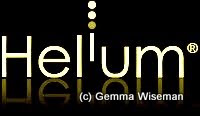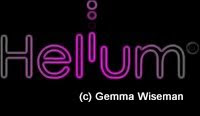Published: November 24, 2007 on Helium

Plants inside the home and outside in the garden are an easy means of attracting good feng shui. They are also a simple means of improving air quality, enriching it with more oxygen. Indoor plants represent the yin energy and those outside represent yang energy; together they create domestic harmony and balance.
Rounded, arching leafed plants, like palms and ferns, are best for inside yin energies. The Areca Palm is perhaps the easiest to grow, but the Lady Palm is a winner for improving air quality and diluting unsavory aromas. The Boston Fern adds a lush green to the environment, but can be a little temperamental with temperature or light change. For combating negative electrical energies, (especially from TVs), and diffusing stale alcohol aromas, the Peace Lily is the winning choice. And don't forget, there is a bonus of luminous white blooms to add a living accent to the room. For poorly lit areas, Dracaena "Janet Craig" will survive well. It will even tolerate a little neglect. A cactus may be an artist's choice for unusual shape, but is more suited to a "home protector" outdoors.
Indoor plants represent feng shui principles best if they are carefully placed and spaced. You may follow the Bagua quadrant concepts, representing compass directions. The optimum area for plants is the health and family quadrant in the east, the living awakening zone. The only area not recommended for plants is the bedroom. Some feng shui adherents believe the growth element of plants creates chi energy, not conducive for a restful sleep. But I wonder if improved air quality from a plant, in a bedroom that is not regularly aired, may challenge that belief.
A further use for plants indoors is to slow down the rate of chi energy. A long hall from a front door may encourage racing energy. A plant placed halfway down the hall will slow the energy, allowing it to filter more productively through the home.
Outdoors, plants generate a wealth of positive feng shui if the landscaping winds gently through the garden space. There should be no bare, straight, wide concrete driveways or paths. Positive chi energy should move slowly round the home, so none is wasted.
Select plants here with purpose and balance in mind. Take the size of the garden space into account and create visual harmony. Graceful, droopy flowering plants like the white may bush should be contrasted with the vibrant, red of upright tulips. But take care not to create a busy landscape. Well placed single plants are easier, more relaxing on the eye. Or a hedge of one plant creates bushiness without "busy-ness".
It would be worthwhile to check out the traditional meanings of plants before making a final selection. The yew is the traditional symbol of protection and the pine is the symbol of longevity. A eucalyptus minimizes sinuses (great for spring hay fever sufferers!) The gold of the orange tree attracts prosperity and the lemon or lime tree counteracts exhaustion. The magnolia symbolizes honesty and truth. And the lotus enhances creativity.
But the garden is a mini world, reflecting the elements of universal nature. There should be a water element in the form of maybe a round pond, fountain or bird bath balancing the fire element of red or orange colored plants. The wood of plants should be balanced with the metal of a sundial or bronze sculpture. Lacy, delicate plants, capturing the whim of the wind, need to be balanced with strong, tight shrubs.
Minimise clutter, overgrowth and tensions in the garden. Mow the lawn regularly and keep garbage bins hidden in an open ended enclosure. This practice encourages clean, tidy, harmonious lines in the garden, ideal for spiritual serenity. Fragrant flowers (like jasmine) and herbs (like mint) activate a treasure trove of good feng shui; but space them well, so that there is a flow and not a conflict of scents.
The home interior and exterior garden are palettes for the creative mind, wishing to cultivate living energy in the form of plants. The process and the product encourage good feng shui.
Sources
www.fengshuibasics.com
www.indobase.com

Plants inside the home and outside in the garden are an easy means of attracting good feng shui. They are also a simple means of improving air quality, enriching it with more oxygen. Indoor plants represent the yin energy and those outside represent yang energy; together they create domestic harmony and balance.
Rounded, arching leafed plants, like palms and ferns, are best for inside yin energies. The Areca Palm is perhaps the easiest to grow, but the Lady Palm is a winner for improving air quality and diluting unsavory aromas. The Boston Fern adds a lush green to the environment, but can be a little temperamental with temperature or light change. For combating negative electrical energies, (especially from TVs), and diffusing stale alcohol aromas, the Peace Lily is the winning choice. And don't forget, there is a bonus of luminous white blooms to add a living accent to the room. For poorly lit areas, Dracaena "Janet Craig" will survive well. It will even tolerate a little neglect. A cactus may be an artist's choice for unusual shape, but is more suited to a "home protector" outdoors.
Indoor plants represent feng shui principles best if they are carefully placed and spaced. You may follow the Bagua quadrant concepts, representing compass directions. The optimum area for plants is the health and family quadrant in the east, the living awakening zone. The only area not recommended for plants is the bedroom. Some feng shui adherents believe the growth element of plants creates chi energy, not conducive for a restful sleep. But I wonder if improved air quality from a plant, in a bedroom that is not regularly aired, may challenge that belief.
A further use for plants indoors is to slow down the rate of chi energy. A long hall from a front door may encourage racing energy. A plant placed halfway down the hall will slow the energy, allowing it to filter more productively through the home.
Outdoors, plants generate a wealth of positive feng shui if the landscaping winds gently through the garden space. There should be no bare, straight, wide concrete driveways or paths. Positive chi energy should move slowly round the home, so none is wasted.
Select plants here with purpose and balance in mind. Take the size of the garden space into account and create visual harmony. Graceful, droopy flowering plants like the white may bush should be contrasted with the vibrant, red of upright tulips. But take care not to create a busy landscape. Well placed single plants are easier, more relaxing on the eye. Or a hedge of one plant creates bushiness without "busy-ness".
It would be worthwhile to check out the traditional meanings of plants before making a final selection. The yew is the traditional symbol of protection and the pine is the symbol of longevity. A eucalyptus minimizes sinuses (great for spring hay fever sufferers!) The gold of the orange tree attracts prosperity and the lemon or lime tree counteracts exhaustion. The magnolia symbolizes honesty and truth. And the lotus enhances creativity.
But the garden is a mini world, reflecting the elements of universal nature. There should be a water element in the form of maybe a round pond, fountain or bird bath balancing the fire element of red or orange colored plants. The wood of plants should be balanced with the metal of a sundial or bronze sculpture. Lacy, delicate plants, capturing the whim of the wind, need to be balanced with strong, tight shrubs.
Minimise clutter, overgrowth and tensions in the garden. Mow the lawn regularly and keep garbage bins hidden in an open ended enclosure. This practice encourages clean, tidy, harmonious lines in the garden, ideal for spiritual serenity. Fragrant flowers (like jasmine) and herbs (like mint) activate a treasure trove of good feng shui; but space them well, so that there is a flow and not a conflict of scents.
The home interior and exterior garden are palettes for the creative mind, wishing to cultivate living energy in the form of plants. The process and the product encourage good feng shui.
Sources
www.fengshuibasics.com
www.indobase.com




